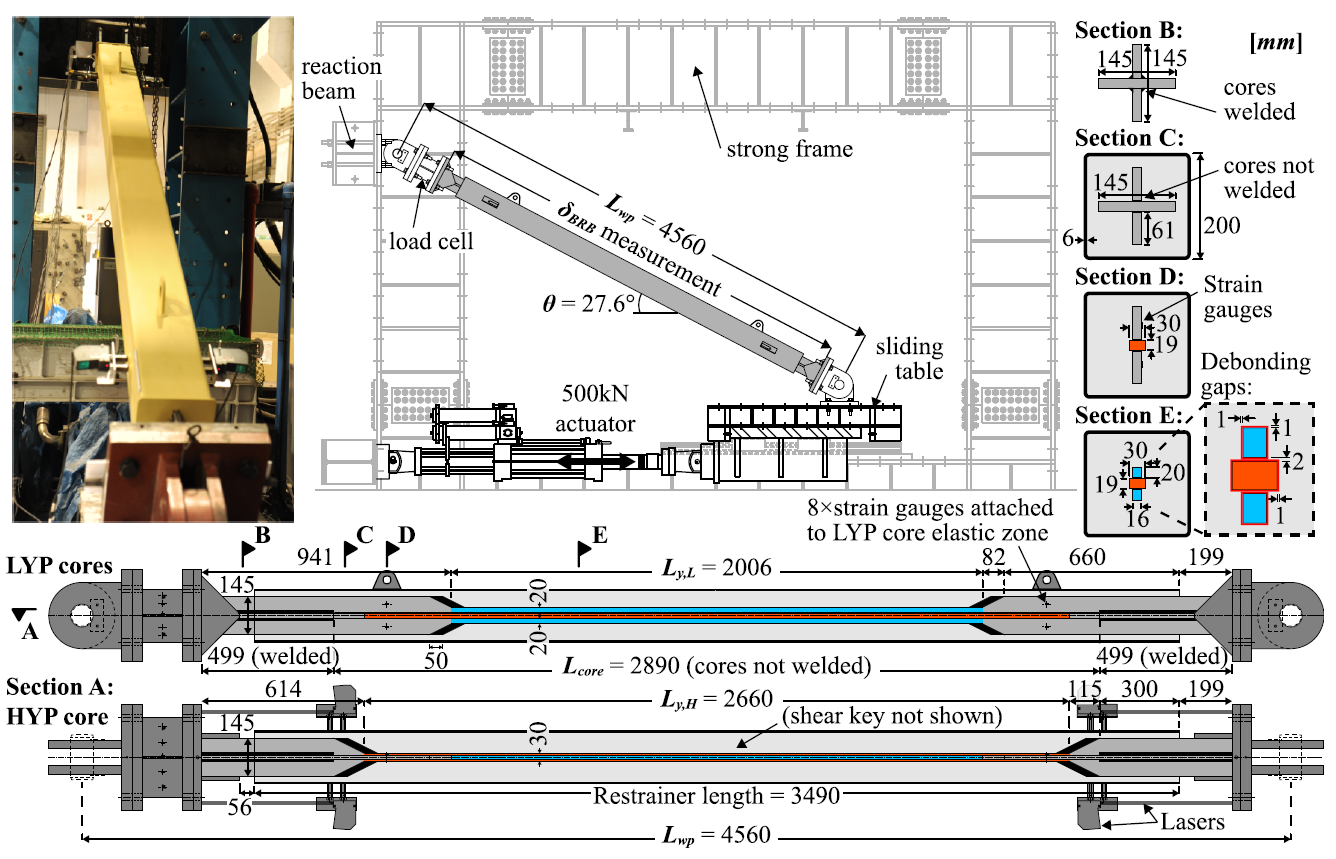骨組を剛接ラーメン架構として水平抵抗に利用する日本とは異 なり,海外では柱梁をピン接合として鉛直荷重のみを負担させることが多く,耐震設計時は地震後の残留変形および特定層への損傷集中が課題となります。これに対し海外では,BRB に初期張力材を付加 することで原点復帰(セルフセンタリング)機能を持たせ,架構の残 留変形を抑制するセルフセンタリングBRBの提案が行われており,本研究では降伏応力度の異なる2種類の鋼材を組合せたセルフセンタリングBRBを提案しました。博士課程のクラスメートを手伝った研究です。論文はこちら
While buckling-restrained braces offer excellent energy dissipation characteristics, their low post-yield stiffness may result in large residual drifts and interstory drift concentration when used in simply supported frames. This paper introduces a new multistage buckling-restrained brace to help mitigate these design challenges. The proposed device features two low yield point (LYP) cores with LY225 and short yield lengths, and one high yield point (HYP) core with SA440B and a longer yield length. In a design level event, the LYP cores dissipate energy, while the parallel HYP core provides an elastic restoring force. At large drifts, the HYP core yields and the device acts similar to a high-capacity, ductile, conventional BRB. A 384 kN specimen was tested at up to 1.5% strain and the individual core contributions recorded using strain gauges attached to the elastic core segments inside the restrainer. The multistage response matched the predicted trilinear backbone, achieving 10 to 20% equivalent damping prior to yielding the HYP core, and a fatigue capacity exceeding three times the AISC 341-16 acceptance criteria. Interaction between the decoupled cores was studied using a 3D finite element model, indicating that minor detailing changes could further improve performance.
